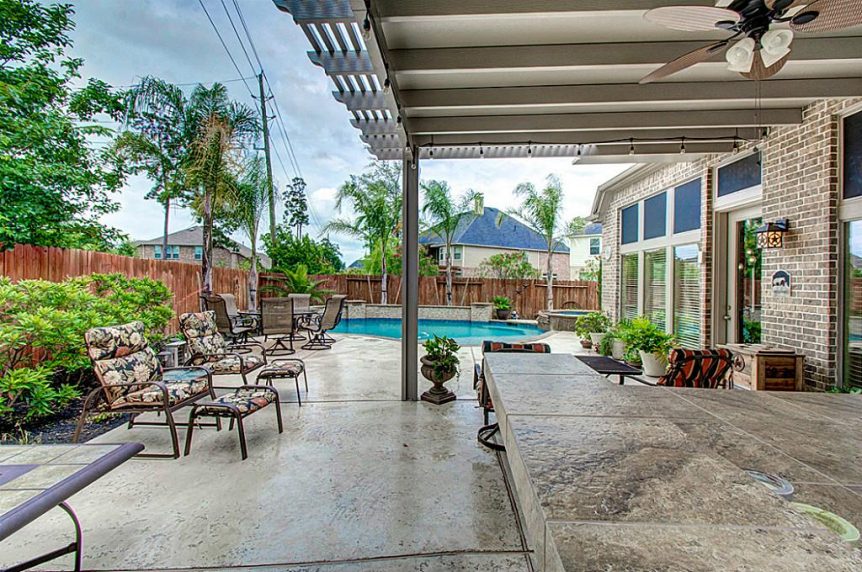When it comes to creating an outdoor oasis, a well-designed patio cover can transform your space into a cozy retreat. While traditional materials like wood and metal have long been used, innovative options are emerging that combine aesthetics, durability, and sustainability. In this article, we explore cutting-edge materials for modern patio covers and new pergola construction projects.
Composite Polystyrene: Lightweight and Resilient
Composite polystyrene is gaining popularity due to its impressive properties. This engineered material combines expanded polystyrene (EPS) foam with a durable outer shell. Here’s why it’s a game-changer:
- Lightweight: Composite polystyrene is significantly lighter than traditional materials, making installation easier and reducing structural load.
- Insulation: The foam core provides excellent thermal insulation, keeping your patio cool in summer and warm in winter.
- Weather-Resistant: The outer shell withstands UV rays, rain, and temperature fluctuations without fading or warping.
- Design Versatility: Available in various textures and finishes, composite polystyrene allows creative designs beyond flat surfaces.
UV-Resistant Perspex: Transparent Elegance
Perspex (acrylic) is no stranger to patio covers, but UV-resistant variants take it up a notch. Here’s why it’s worth considering:
- Crystal Clear: UV-resistant Perspex maintains its transparency over time, unlike regular acrylic that yellows with sun exposure.
- Light Transmission: It allows natural light to filter through, creating a bright and inviting outdoor space.
- Custom Shapes: Perspex can be molded into curved or angular shapes, adding architectural interest.
- Low Maintenance: Simply wipe it clean, and it’ll look pristine for years.
Sustainable Alternatives: Bamboo and Recycled Materials
Embrace eco-conscious choices by exploring sustainable materials:
- Bamboo: Known for its rapid growth and strength, bamboo makes an excellent patio cover material. It’s lightweight, resistant to pests, and has a natural aesthetic.
- Recycled Plastic: Repurposed plastic lumber mimics wood but requires zero maintenance. It’s resistant to rot, insects, and UV rays.
Ferroconcrete Panels: Industrial Chic
Ferroconcrete (reinforced concrete) panels offer an industrial vibe with a touch of elegance:
- Strength: Ferroconcrete withstands extreme weather conditions, making it ideal for patio covers.
- Texture Play: Panels can be smooth, textured, or imprinted with patterns.
- Integrated Lighting: Concealed LED strips within the panels create a dramatic effect at night.
Photovoltaic (PV) Panels: Energy-Generating Covers
Why settle for a regular patio cover when you can harness solar energy?
- Solar Power: PV panels not only provide shade but also generate electricity. Connect them to your home grid or use them for outdoor lighting.
- Customizable: Choose transparent or semi-transparent panels based on your energy needs.
- Eco-Friendly: Reduce your carbon footprint while enjoying your patio.
Conclusion
As you plan your patio cover, think beyond convention. Consider moving beyond the most common materials and consider these innovative materials to elevate both form and function. Whether you opt for lightweight composite polystyrene, UV-resistant Perspex, or sustainable bamboo, your patio cover can be a masterpiece that seamlessly blends aesthetics and practicality. Let your outdoor space reflect your unique style while embracing the future of design.
Remember, a well-crafted patio cover not only shields you from the elements but also invites you to linger longer, savoring the beauty of your surroundings. Happy designing from Texas Patio Covers!

